Best Practices Articles

The Modern Manufacturer’s Challenge: Scaling Your Channel Without Creating Chaos
Key Takeaways:
- Fragmentation is the Core Problem: Relying on disconnected tools (spreadsheets, separate CRMs) for channel management creates chaos, wastes resources, and directly hurts profitability.
- The Solution is Unified Software: The strategic shift is adopting all-in-one Channel Management Software (or UPM). This platform unifies all partner processes—from lead tracking to training—into one system.
- Visibility is Key to Growth: Good Channel Management Software eliminates the "black box" of the sales pipeline. It provides real-time data, allowing leaders to make data-driven decisions and move toward a true revenue operations.
- Empowerment Drives Performance: An integrated platform improves the Partner Experience (PX) by offering automated lead distribution, brand-compliant marketing assets (TPMA), and structured training (LMS). This boosts partner engagement and loyalty.
- Digital Transformation Must Include the Channel: For manufacturers, achieving Manufacturing 4.0 standards requires applying the same efficiency and control to the sales channel that is used on the factory floor.
Manufacturers are facing an enormous opportunity. They must also manage great complexity in today's global economy. The drive towards Manufacturing 4.0 has changed factory floors forever. This change brings intelligent automation and data exchange. However, this innovation often stops right after products are shipped. The sprawling network of distributors, dealers, and resellers continues to drive revenue. This network is still managed with outdated tools and manual processes. As manufacturers expand their markets, they diversify product lines. They face a critical dilemma. How can they scale their channel sales ecosystem? They must do this without simultaneously scaling operational chaos. The answer is not more spreadsheets or email threads. The strategic solution involves adopting advanced Channel Management Software. This article examines the most significant problems global manufacturers face. These problems arise when channel operations struggle to keep pace with growth. We will address issues such as brand damage, invisible sales pipelines, and partners losing interest. We will demonstrate how a unified platform gives the control needed for efficiency. This is a significant shift in strategy. It is a necessary step toward business modernization. It makes the sales channel align with the company's digital transformation.
The Hidden Costs of a Disconnected Global Channel
The main goal for a Channel Chief or VP of Sales is simple. They want to drive more revenue through their partners. Achieving this is often challenging due to operational friction. The channel ecosystem uses separate systems. One region might rely on a standalone CRM. Another might use simple spreadsheets for tracking leads. A basic website portal might only hold marketing files. This system fragmentation costs time and money. This significantly reduces performance and profits. This separation is a strategic weakness for the business. The hidden costs appear in several critical areas.
Wasted Resources and Duplication
Teams like marketing, sales, and operations often repeat work. This happens without a central system. It is hard to track Marketing Development Funds (MDF) accurately. This leads to under-spending. Worse, it leads to spending on activities that do not produce good returns. Sales teams spend too many hours chasing partners for pipeline updates. They should be coaching partners instead. This lack of infrastructure consolidation results in the need to pay for multiple tools. These overlapping tools do not communicate. This causes inefficiency by design. Adopting robust Channel Management Software prevents this waste.
Data Silos and Poor Decisions
Partner performance data is stored in isolated locations. It lives in spreadsheets and regional databases. This makes a complete, holistic view impossible. Headquarters cannot accurately predict revenue. They struggle to find the best partners to replicate their success. They can’t spot partners who are struggling and need help. Strategic decisions are often based on guesswork rather than complex data. That is very risky in a competitive market. This actively stops effective revenue operations. Revenue operations require a single, trusted source of information.
Partner Disengagement and Loss
Partners are crucial to the success of indirect sales. However, they are also running their own companies. Partners will disengage if doing business with the manufacturer proves to be difficult. Registering a deal might be too complex. Finding the right marketing material might feel like a "treasure hunt". Getting new product training might require using multiple systems. They will choose manufacturers who offer a smoother, more profitable partner experience. Recruiting and training a new partner is expensive. Losing a good partner because of operational friction costs even more. Ultimately, a disconnected channel performs poorly. It creates chaos, limits visibility, and stops strategic growth.
Challenge #1: Damaging Brand Control and Messaging
A manufacturer's brand is its most important asset. It is built through years of quality and trust. The brand is entrusted to thousands of independent partners. Without the right systems, maintaining brand consistency is highly challenging. This causes brand dilution and mixed messages. Partners focus on selling, not on following complex brand rules. They will often create their own marketing materials. This can cause several problems. They might use old logos and slogans. Product descriptions or technical details might be wrong. Pricing and promotions might be inconsistent. The message may not align with the manufacturer’s core value. This confusion weakens the brand’s market position. A customer may see three different ads for the same piece of equipment. They might see three different looks from three local dealers. This lack of unity hurts credibility. It makes the manufacturer’s own marketing efforts less effective.
Solving Brand Chaos with Through-Partner Marketing Automation
Modern channel management software addresses this major issue. It uses integrated Through-Partner Marketing Automation (TPMA) platforms. These systems provide a central, manufacturer-controlled environment. Partners can easily access and use sophisticated marketing campaigns. A unified platform revolutionizes brand management. It moves from reactive policing to proactive empowerment.
-
- It Provides a Centralized Asset Library: Manufacturers upload a full library of approved, brand-compliant marketing materials. This includes email templates, social media posts, co-branded datasheets, and event kits. Partners simply select the asset. They co-brand it with their information. They never create anything from scratch.
- It Automates Multi-Touch Campaigns: Advanced platforms enable manufacturers to create comprehensive, multi-touch campaigns—for example, a three-month new product launch. Partners can subscribe to the campaign. The system automatically sends emails and posts on their behalf. This ensures a consistent, professional message across the entire channel.
- It Streamlines MDF and Co-op Fund Management: The platform connects marketing activities with fund management. Partners can easily request MDF for specific campaigns within the system. Manufacturers approve the requests. They also track the ROI of that spending. The system can automatically confirm that an activity was completed. This happens before funds are released. This dramatically reduces paperwork. It ensures effective expenditures.
Manufacturers provide simple, practical tools to partners. This makes partners’ marketing more effective. The manufacturer becomes an essential marketing resource. This achieves brand consistency without enforcing strict rules.
Challenge #2: The 'Black Box' of Partner Performance and Sales Pipeline
The partner sales pipeline is often a "black box" for manufacturing leaders. They know leads are sent out. They know deals eventually close. But they have a minimal real-time view of what happens in between. This lack of visibility causes inaccurate sales forecasting. It results in missed revenue targets. It stops proactive channel management. The problem comes from relying on manual reporting. It depends on separate, disconnected systems. Channel managers often spend the end of every quarter calling partners. They frantically ask for spreadsheet updates on the sales funnel. This data is frequently incomplete. It is quickly outdated. It is also inconsistent between different partners. This blindness stops you from answering key business questions. Which partners move leads rapidly? Which ones let them go cold? What is our actual, total sales forecast across all regions? Where are the slowdowns in the sales process? Are we at risk of missing quarterly targets? Can we help deals close faster to fix the gap? Without clear answers, channel management is only reactive. You cannot reward top performers with data. You cannot provide specific coaching to those struggling. This lack of a data-driven strategy is a significant barrier. It prevents the development of a high-performance sales engine. Channel Management Software provides the necessary data. It is a core challenge in the journey toward digital transformation.
Illuminating the Pipeline with Unified Lead and Performance Management
A robust Channel Management Software platform breaks down the black box. It replaces it with a glass window. It provides a single, shared environment. This is for lead management, deal registration, and performance analytics. It creates a single source of truth for both the manufacturer and the partners. This is achieved through key functions.
-
- Centralized Lead Management: Leads are not emailed into a void. The platform allows for automated, rules-based lead distribution. Leads can be assigned based on location, partner tier, or product certification. The lead's full life is tracked once a partner accepts it. This is tracked from first contact to the final sale. This gives channel managers real-time insight into lead status and conversion rates.
- Automated Deal Registration: Partners register their deals directly within the platform. This prevents channel conflict. It gives them clear ownership. It provides the manufacturer with an early view of potential revenue. The system automates the approval process. This ensures a fair and transparent process for all partners.
- Real-Time Dashboards and Analytics: The real power of infrastructure consolidation shows here. The platform gathers all data. It puts it into clear, real-time dashboards. A Channel Chief can view a global pipeline. They can filter by region, product, or partner. They can identify trends instantly. This enables a proper revenue operations mindset. Sales, marketing, and partner management teams all work from the same data. This drives predictable growth.
The unified platform offers partners a straightforward and valuable tool for managing leads. It provides headquarters with unmatched insight. This aligns the whole ecosystem around the goal of closing business faster.
Challenge #3: Slow Onboarding and Uneven Partner Enablement
The speed at which you activate a new partner is a huge advantage. A new distributor or dealer is pure potential revenue. That potential is only unlocked when they are fully trained. They must be confident in their ability to sell. They must be satisfied with their ability to service your products. For many manufacturers, partner onboarding is a slow process. It is manual and inconsistent. It often involves a disorganized series of emails with PDF files. It might include ad-hoc webinars. It may consist of a thick binder of technical details. This method cannot be scaled. It is hard to track. It results in a highly varied partner experience. One partner might get excellent training. Another partner might be left to figure things out on their own. This inconsistency creates negative results.
-
- Delayed Time-to-Revenue: The longer it takes to train a partner, the longer it takes for them to make revenue. A 90-day onboarding process means 90 days of lost sales opportunities.
- Knowledge Gaps and Poor Customer Experience: Untrained partners cannot provide a good experience to the end customer. They may not be aware of the latest product features or service rules. This causes lost deals. It hurts the brand’s reputation for quality.
- Low Partner Engagement: A confusing onboarding experience sends a bad message. It suggests the new partner is not a priority. This can cause early disengagement. It makes building a loyal channel difficult.
Products are becoming more complex. Relying on old training methods is unsustainable. A strong Channel Management Software platform is the answer.
Accelerating Performance with an Integrated Learning Management System
The solution is a robust Partner Learning Management System (LMS). It must be directly integrated within a complete Channel Management Software platform. This creates a central, on-demand university for all partners. Every partner receives the same high-quality, structured training. This is true regardless of location or start date. A unified platform with an integrated LMS simplifies the entire training life cycle.
-
- Automated Onboarding Workflows: You can design step-by-step onboarding paths. These guide new partners through every required task. Tasks include signing contracts, completing legal forms, and finishing intro training. The system automatically tracks their progress. It alerts both the partner and manager to any missing items.
- On-Demand Training and Certification: Create a library of on-demand training courses. This replaces many live webinars. Courses cover product details, sales skills, and marketing best practices. You can create certification paths. Partners must pass tests to become certified on products. This ensures a minimum level of expertise across the entire channel. This is a key part of business modernization.
- Just-in-Time Sales Enablement: The LMS is a continuous resource. It is not just for onboarding. A partner's sales rep can quickly review a short video before a big call. They can learn how to handle common objections. They can download the latest competitive information. This puts the most helpful information at their fingertips exactly when needed.
Automating and centralizing partner training achieves several things. Manufacturers can dramatically reduce time-to-revenue. They ensure a consistent knowledge base globally. They foster a more engaged and capable partner ecosystem.
Challenge #4: Lead Management Complexity and Channel Conflict
Lead distribution and management are complex parts of running an indirect sales channel. A manufacturer creates a lead. This might be from a trade show or a website. The crucial question is always the same. Which partner receives it? Without a transparent, systematic, and fair process, the answer is often unfair. It is whoever is the loudest. It is a matter of preference for the regional manager. This random approach causes significant problems. It makes partners resentful. It leads to channel conflict. It results in a poor experience for the potential customer. It looks unprofessional when multiple partners call the same lead. It creates confusion, as leads can easily be lost without a formal tracking system. They get forgotten in an email inbox. They get lost on a spreadsheet. This is a direct loss of potential revenue.
Creating Order with Rules-Based Lead Distribution and Deal Registration
Modern Channel Management Software is designed to solve these exact issues. It replaces manual chaos. It uses automated, transparent, and rules-based processes. This ensures fairness. It maximizes the conversion potential of every lead. A unified platform brings order with two main functions.
-
- Automated Lead Distribution Engine: This feature enables manufacturers to create complex rules for assigning leads. Distribution can be based on many criteria. This ensures that the right lead is directed to the right partner. This is based on Territory (zip codes, states, etc.). It can be based on Partner Tier (Gold partners get higher-value leads). It can be based on Certifications (complex leads go to certified partners). It can even use a Performance "waterfall" model. The lead is first offered to the top partner. It automatically moves to the next partner if they don't accept it quickly.
- Centralized Deal Registration: A deal registration module is essential. This protects partners as they develop their own opportunities. A partner logs in to the portal. They register the deal they are working on. This gives them "ownership" of the opportunity for a set time. This prevents others from pursuing it. The system automatically checks for duplicates. It manages the approval workflow. This provides a transparent and conflict-free process. It encourages proactive selling.
Manufacturers implement a system that is transparent and fair. It is also performance-driven. This eliminates channel conflict. It fosters a genuine partnership founded on trust and mutual success. This infrastructure consolidation of lead and deal data is critical. It is the foundation of an effective go-to-market strategy.
The Strategic Shift: From Separate Tools to Unified Channel Management
The problems discussed are not separate issues. Brand damage, invisible pipeline, slow onboarding, and lead chaos are symptoms. They show a deeper problem. The problem is a fragmented technology stack. It is a reactive channel approach. The solution is not to find a tool for each issue. The solution is to make a strategic shift to a holistic, unified platform. This is the core of Unified Partner Management (UPM). A UPM platform combines all necessary tools and processes. This manages the entire partner life cycle. It replaces the jumble of spreadsheets, email, and separate portals. It creates a single portal, a unified login, and a single source of truth. This move toward infrastructure consolidation is a crucial step. It is a part of a manufacturer's larger digital transformation. It aligns the go-to-market strategy with factory floor efficiency efforts. This is part of Manufacturing 4.0. The benefits of this unified approach are significant. They affect the whole organization. Leading solutions, often referred to as Unified Channel Management Software, serve as the central nervous system for the indirect sales ecosystem.
-
- For Channel Leadership: The unified platform gives leaders strategic visibility. They get accurate, real-time data on every part of channel performance. This allows data-driven decisions on resources and strategy. It turns channel management from guesswork into a science.
- For Channel Account Managers (CAMs): CAMs are freed from chasing partners for data. They stop being "spreadsheet jockeys". They become true strategic coaches. All partner activities are visible on the platform. They have informative conversations about pipeline health and training needs. They help their partners grow their business.
- For Marketing Teams: Marketing gains control over the brand message. They can measure the true ROI of channel marketing. They empower partners with practical, easy tools. They ensure every dollar of MDF is tracked. It leads to a specific result.
- For the Partners Themselves: This is the most critical benefit. A unified platform dramatically improves the Partner Experience (PX). Partners get one-stop-shop access. They get everything needed to succeed. This includes registering leads, accessing campaigns, training, and working with their CAM. A better PX means higher engagement and greater loyalty. Ultimately, this means more revenue.
Key Features to Look for in Modern Channel Management Software
Look for a truly unified platform when evaluating solutions. Avoid selecting a collection of poorly integrated modules. A top-tier platform must offer full functionality across the entire partner journey. These are the core capabilities to prioritize in any Channel Management Software:
-
- Partner Relationship Management (PRM): This is the foundation. It includes a central partner database. It has communication tools. It also has business planning templates and performance scorecards.
- Through-Partner Marketing Automation (TPMA): This module provides co-brandable assets to partners. It offers automated campaigns. It includes social media syndication. This is all while maintaining brand control.
- Partner Learning Management System (LMS): This is an integrated system. It creates automated onboarding workflows. It manages on-demand training and certification programs. This ensures partners are always knowledgeable and skilled. A robust Channel Management Software solution includes this.
- Lead & Deal Management: These robust tools allow rules-based lead distribution. They enable automated deal registration. They give complete pipeline visibility. This eliminates channel conflict and maximizes sales speed.
- MDF & Co-op Fund Management: This automated system manages the entire life cycle of market development funds. This encompasses partner requests and approval, as well as claims processing and ROI analysis.
- Advanced Analytics & Reporting: These are powerful, customizable dashboards that provide actionable insights. They give a 360-degree view of the entire channel operation. They let you track KPIs, identify trends, and make informed decisions.
Choosing a platform with these integrated capabilities is essential. It means you are building a scalable foundation for future growth and modernization. The right Channel Management Software choice is vital.
Conclusion: Using Digital Transformation to Build a High-Performance Channel
The manufacturing industry is defined by innovation, precision, and efficiency. Channel operations must now be managed with the same high standards. Continuing to rely on disconnected manual processes is no longer a viable strategy. It is a direct impediment to growth, profitability, and market leadership. The shift to a unified Channel Management Software platform is more than just a technology upgrade. It is a fundamental part of your company's digital transformation. This strategic move streamlines operations. It empowers partners. It provides the data insights needed to compete and win. Consolidating your channel infrastructure eliminates chaos. It replaces chaos with clarity, control, and collaboration. This is what is required to build a truly high-performance partner ecosystem. You move from just managing your channel to actively orchestrating its success. Ready to leave the chaos behind? Do you want to build a channel that can match your ambitions? Explore how a Unified Partner Management platform can transform your operations. It will unlock the true potential of your partner network. This is the power of innovative Channel Management Software.
Best Practices Guidebook
 Startup Talent Recruitment: Hiring Missionaries, Not Mercenaries
Startup Talent Recruitment: Hiring Missionaries, Not MercenariesDownload for FREE
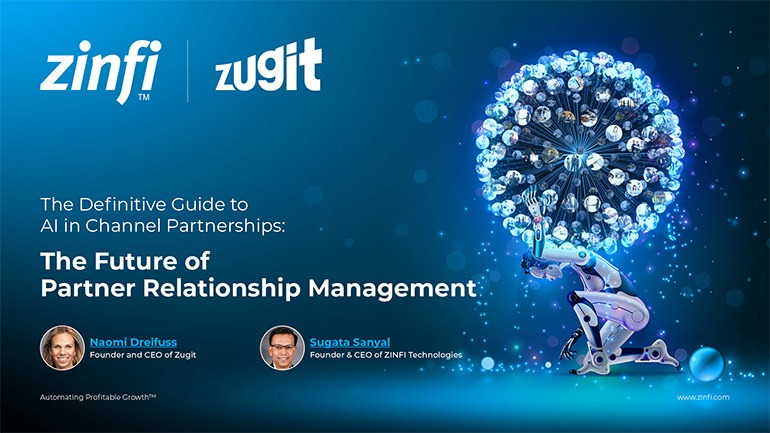 The Future of Partner Relationship Management with AI in Partnerships
The Future of Partner Relationship Management with AI in PartnershipsDownload for FREE
 Cybersecurity for the 99%: Strategies from the Frontline
Cybersecurity for the 99%: Strategies from the FrontlineDownload for FREE
 Mastering Partner Relationships: A Strategic Approach to Business Growth
Mastering Partner Relationships: A Strategic Approach to Business GrowthDownload for FREE
 The Smart Manufacturing Playbook: Industry 4.0 Transformation
The Smart Manufacturing Playbook: Industry 4.0 TransformationDownload for FREE
 Mastering Partner Relationship Management: Keys to SaaS Channel Success
Mastering Partner Relationship Management: Keys to SaaS Channel SuccessDownload for FREE
 Navigating the AI Revolution: Guide for Partners in the Microsoft Ecosystem
Navigating the AI Revolution: Guide for Partners in the Microsoft EcosystemDownload for FREE
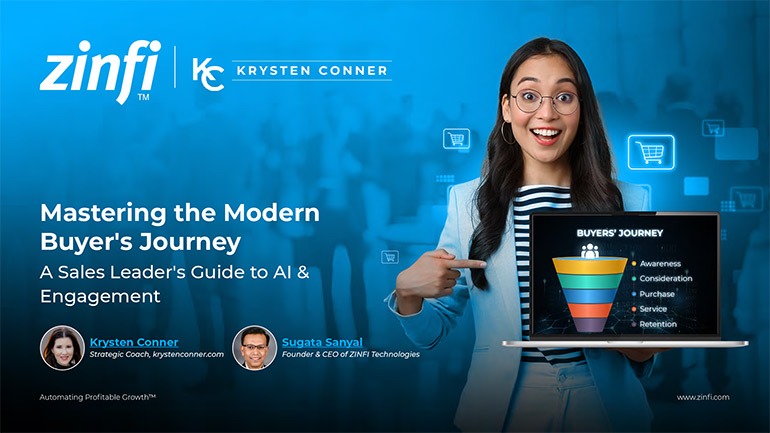 Mastering the Modern Buyers Journey: Sales Leader’s Guide to AI & Engagement
Mastering the Modern Buyers Journey: Sales Leader’s Guide to AI & EngagementDownload for FREE
 Hybrid Cloud and Edge AI Computing Impacting the Future of PRM
Hybrid Cloud and Edge AI Computing Impacting the Future of PRMDownload for FREE
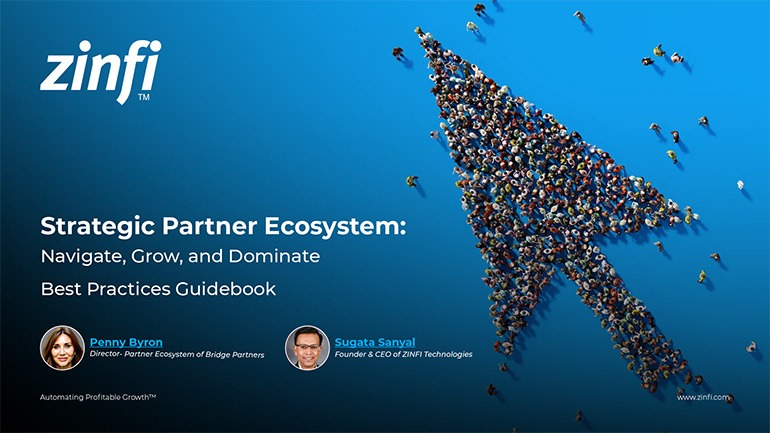 Strategic Partner Ecosystem: Navigate, Grow, and Dominate
Strategic Partner Ecosystem: Navigate, Grow, and DominateDownload for FREE
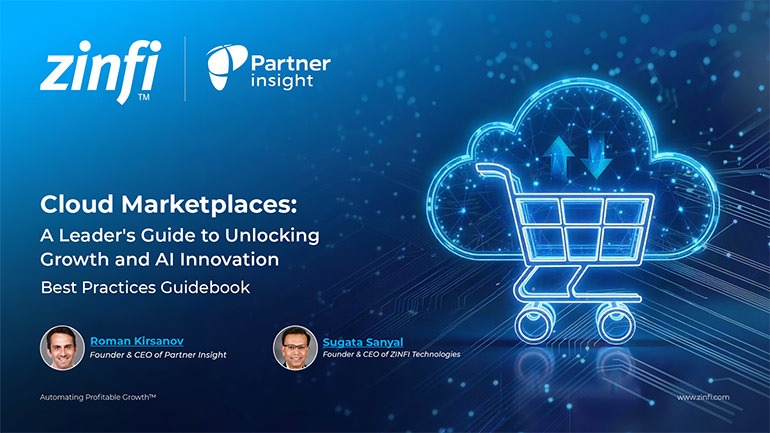 Cloud Marketplaces: Leader’s Guide to Unlocking Growth and AI Innovation
Cloud Marketplaces: Leader’s Guide to Unlocking Growth and AI InnovationDownload for FREE
 Getting More From Partner Performance: Guide to Measuring What Matters
Getting More From Partner Performance: Guide to Measuring What MattersDownload for FREE
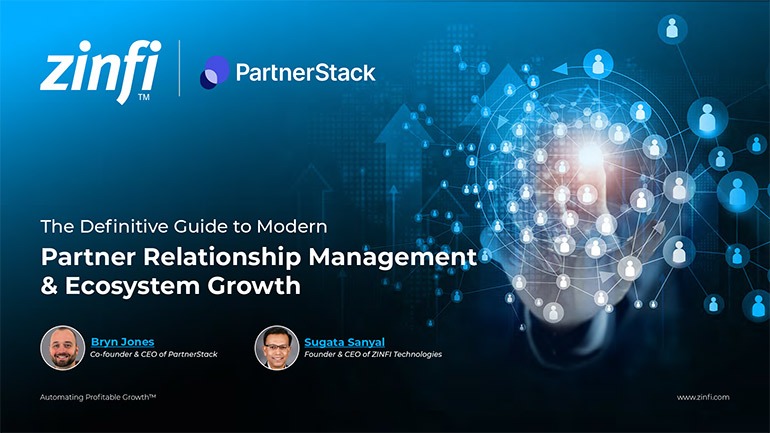 Guide to Modern Partner Relationship Management & Ecosystem Growth
Guide to Modern Partner Relationship Management & Ecosystem GrowthDownload for FREE
 Debunking the Entrepreneurship Myth Best Practices
Debunking the Entrepreneurship Myth Best PracticesDownload for FREE
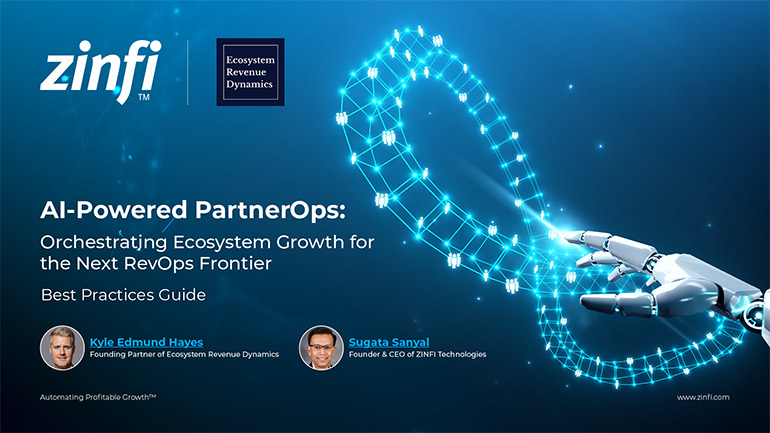 AI-Powered PartnerOps: The Next RevOps Frontier Best Practices
AI-Powered PartnerOps: The Next RevOps Frontier Best PracticesDownload for FREE
 Humanizing Brands: Guide to Strategic Partnering Best Practices
Humanizing Brands: Guide to Strategic Partnering Best PracticesDownload for FREE
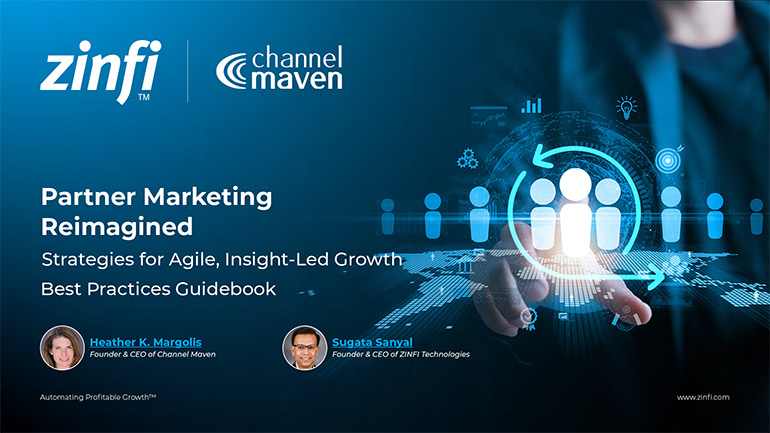 The AI-Powered Partner Ecosystem Best Practices
The AI-Powered Partner Ecosystem Best PracticesDownload for FREE








